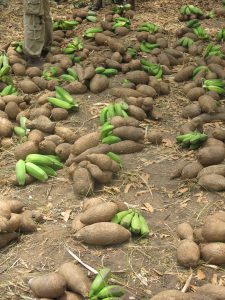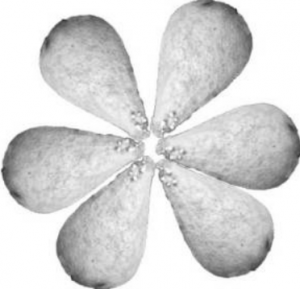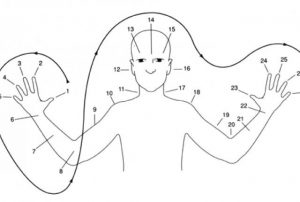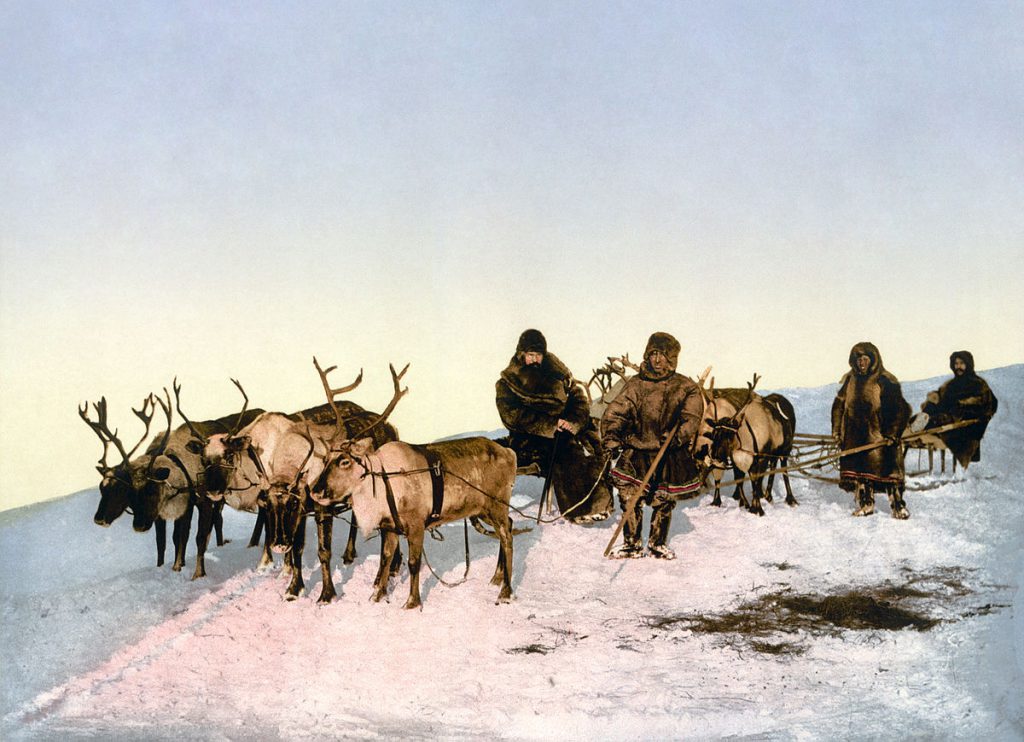How to count to 1296 in Ngkolmpu
In order to feed his family for the year, and prove himself a worthy man, a man living in southern New Guinea is expected to grow 1296 yams (dioscorea sp.) each season. In Ngkolmpu, a language spoken by around 200 people who live in this region in a single village 15kms within the Indonesian side of the border between West Papua and Papua New Guinea, there is a single word for this number ntamnao.
To speakers of English, this seems like an arbitrarily specific number; yet to Ngkolmpu speakers it’s perfectly natural. Ngkolmpu, along with most of its related languages, has what is known as a senary numeral system also known as a base-six system. In English, we use a decimal system which is based on recursions of ten units while senary systems are based around recursions of six. In Ngkolmpu, the words for one to six are naempr, yempoka, yuow, eser, tampui and traowow. Seven is naempr traowo naempr or ‘one six and one;’ thirteen is yempoka traowo naempr or ‘two six and one.’ You should be starting to see the pattern now. But what happens when you get to six groups of six, i.e. 62 or 36? Well there is a specific word for that ptae. In fact, in Ngkolmpu there are words for 62, 63, 64 and 65. That’s all the way up to 7776! Related language Komnzo even has a word wi which is used for 66 or 46,656! If you want to learn how to count to 7776 in Ngkolmpu the entire system is presented in Table 1.
| 1 | naempr | |
| 2 | yempoka | |
| 3 | yuow | |
| 4 | eser | |
| 5 | tampui | |
| 6 | 61 | traowo |
| 7 | naempr traowo naempr | |
| 8 | naempr traowo yempoka | |
| 13 | yempoka traowo naempr | |
| 36 | 62 | ptae |
| 216 | 63 | tarumpao |
| 1296 | 64 | ntamnao |
| 7776 | 65 | ulamaeke |
Table 1 – Senary numerals in Ngkolmpu
While we are used to decimal counting systems in English, lots of languages around the world use different systems. What is remarkable is that these senary systems are essentially unique to the southern New Guinea region. As far as we know, the only languages which use base-six are found in this region. In Ndom, a completely unrelated language to Ngkolmpu spoken on Yos Sudarso Island around 250kms away have a sort of light six-base system. Ndom displays unique words for the numbers one to six, but no words higher terms and no way to construct them from lower numerals; this is what is known as a ‘restricted numeral system.’ As far as we know, this complex base-six system as we see in Ngkolmpu and its relatives are an entirely unique development. This then raises a crucial question: How and why did such a system emerge?

This is a hard question to answer. The leading theory on this is based on the primary use of the counting systems: yam tallying. In the communities of southern New Guinea, the various species of dioscorea aka yam are extremely important for every part of life. They are the primary food staple and, as we said before, the general consensus is that it takes a ntamnao of yams to feed a family for a year. Good yam gardeners count their yams to ensure they have enough food for the year but just as importantly for the bragging rights that accompany being a good gardener. Additionally, yams serve many ceremonial roles, for instance a wedding feast can’t be held without a ntamnao of yams which are meticulously counted, brought to the bride’s village and counted again with all parties present. Smaller feasts might require a tarumpao (216) which are counted and distributed to participants as in Picture 2. The significance of counting yams in these cultures has been hypothesised as the motivation for the development this counting system; something we don’t really see anywhere else in the world. The next question is why base six and not some other number? Well, the main yams consumed in this region are teardrop shaped with a round end and a narrow end. These when placed into small piles naturally fall into neat piles of 6 (Picture 3). This provides a motivation for a specifically 6 based system and supports the claim that numeral system emerged through the practice of tallying yams.

The Ngkolmpu system only has numerals up to 7776 but hypothetically could be used to count to any number. Numeral systems of this type are known as ‘unrestricted numeral systems.’ We take this for granted in English but in smaller communities these are typically not that common. For example, in Marind a culturally dominant language spoken by around 9000 people in the same region as Ngkolmpu have words for one and two only. Counting is done by counting fingers and toes without any productive means for extending beyond that. Similar are the body part tallies of New Guinea such as the Oksapmin body part tally where one can count up to 27 by listing names for the places along the fingers, hands, arms and head for values up to 27 (Picture 4). This is very different to the Ngkolmpu system as we see in Table 1.

It was previously thought that unrestricted numeral systems could only develop in cultures which had sufficient organisational bureaucracy to warrant such a system. What the southern New Guinea situation shows is that the agrarian practices of yam cultivation under certain conditions also allow for the development of advanced counting systems. So, it looks like if people want to count something enough, they can develop the systems to do so which is remarkable.
The next time you have to count up something in multiples of six spare a thought for the Ngkolmpu and their wonderful counting system.
